 CES 2015 was another amazing show. Walking around the show one can only look with wonder about the amazing technologies being invented and turned into products. Few things are as energizing or re-energizing as systematically walking the booths and soaking it all in. I love CES as a reminder of the amazing opportunity to work in this industry.
CES 2015 was another amazing show. Walking around the show one can only look with wonder about the amazing technologies being invented and turned into products. Few things are as energizing or re-energizing as systematically walking the booths and soaking it all in. I love CES as a reminder of the amazing opportunity to work in this industry.
Taking a moment to share what I walk away with is always helpful to me—writing is thinking. Every day we have the chance to talk to new companies about products under development and ideas being considered and CES provides a great cross-industry context about what is going on. This is especially important because of the tendency to look too much to the massive companies that might dominate our collective point of view. My experience has been that spending energy on what is going on CES unlocks potential opportunities by forcing you to think about problems and solutions from different perspectives.
While this post goes through products, there are many better sources for the full breadth of the show. I try to focus on the broader themes that I walk away with after spending a couple of days letting everything sort of bake for a bit. This year I wanted to touch on these 5 major themes and also include a traditional view of some of the more “fun” observations:
- Batteries, wires, simplicity
- Displays popping up everywhere
- Cameras improving with Moore’s law
- Sensors sensing, but early (and it’s all about the data)
- Connectivity gaining ubiquity
- Fun Products
Ever the product manager (PM) I try to summarize each of these sections with some top-line PM Learning to put the post into action.
Click on images for larger version. All photos by me unless noted.
Batteries, wireless, simplicity
PM Learning: Of course optimize your experiences to minimize impact on battery life, but don’t assume your competitors will be doing the same. Think about the iPhone OS and built in apps navigating that fine line. In you’re making new hardware, assume standard connectors for charging betting on Type-C and HDMI.
The best place to start with CES is batteries and wires, because that’s what will follow you around the entire show—everyone walks the show floor in search of outlets or with an auxiliary battery and cable hanging off their phone. Batteries created the portable consumer electronics revolution, but we’re also tethered to them far too often. The good news is that progress is real and continues to be made.
Behind the scenes a great deal of progress is being made on power management with chipsets even wireless ones. On display at the show were Bluetooth keyboards can go a year on a single charge or wireless headphones are good for days of normal usage.
Progress is also being made on battery technology that is making it possible for smaller, lighter, and faster charging batteries. While these are not dramatic 2 or 3X improvements, they are real.
The first product I saw was an LG cordless vacuum that had 70 minutes of usage and the cleaning power passing the classic bowling ball suction test. Truly something that makes everything easier.
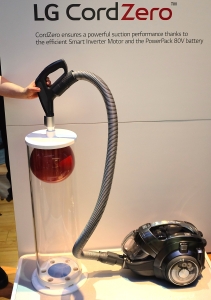
Batteries are an important part of transportation and Panasonic is the leading manufacturer right now of large-scale batteries for transport. On display was the GoGoRo urban scooter. This is not just a battery-operated scooter that can go 95 km/h and is cloud connected with GPS locator maps. It can go 100km on a pair of batteries. All that would be enough. But the batteries can be swapped out in seconds and you’re on the go. The company plans to build a network of charge stations to go with a business model of subscription. I love this whole concept.

Panasonic also makes batteries for the Tesla so here is a gratuitous picture of the gratuitous Tesla Model X on display.

While all consumer electronics have aimed for simplicity since the first blinking 12:00 on a VCR, simplicity has been elusive due to the myriad of cables, connectors, remotes, and adapters. Normally a CES trip report would include the latest in cable management, high tech cables, or programmable remotes. Well, this year it is fair to say that these whole categories have basically been subsumed in a wave of welcome simplicity.
Cables, to the degree they are needed, have mostly been standardized on HDMI for video and USB for charging and peripherals. With the forthcoming USB Type-C even USB will be standardized. The Apple connectors are obviously all over though easily adapted to micro-USB for now (note to makers of third party batteries—margins are tight, but using a MFI logo and an Apple cable end would be welcome). When you do need cables they are getting better. It was great to see an awesome fiber-optic cable from Corning that worked for USB (also displayport). It makes the cable much thinner and more flexible along with increasing the signal travel distance since it uses active powered ends. HDMI in the works.

While most attention went into Smart Watches with too many features, Casio’s latest iteration offered a new combination of better battery life and low power radios. The new watch uses solar charging along with a GPS receiver (and also the low power radio waves) to set the time based on location. And it is not even huge.

Bringing this theme is no wires and improved batteries to a new extreme, the wireless earbuds from Bragi are aggressive in the feature set by incorporating not just BT for audio but a microphone for talking and sensors for heart rate (though not likely very reliable) and temperature (not sure of the use as a practical matter). But certainly worth looking at when they are available. Photo by Bragi.
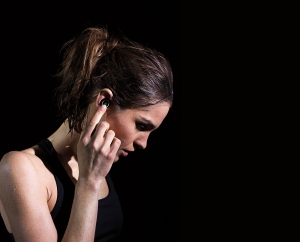
Displays popping up everywhere
PM Learning: Curved is here. Too much energy is going into this. Expect to find new scenarios (like signage) and thus new opportunities. Resolution at 4K and beyond is going to be normal very quickly and with a price premium for a very short time. Pay close attention to web page design on high resolution and high DPI (assets). Many opportunities will exist for new screens that will run one app in a fixed function manner for line of business or in consumer settings—these are replacing static signs or unmanageable PCs. We’re on the verge of broadly deployed augmented reality and totally soft control screen layouts, starting with cars.
More than anything, CES continues to be the show about TV.
Curved screens are getting a lot of attention and a lot of skepticism, some of which is warranted. Putting them in an historical context, each generation of screen innovation has been greeted in a similar manner. Whether too expensive, too big, too incremental, or just not useful the reasons a new screen technology wasn’t going to take off have been plentiful. While curved seems weird to most of us (and frankly even maker is trying too hard to justify it, as seen in the pseudo scientific Samsung depictions below) it has compelling utility in a number of scenarios. Skeptics might be underestimating the architectural enthusiasm for the new screens as well.


The most immediate scenario is one that could be called the “Bloomberg desktop” and here you can see it on display. It is very compelling as a single user, a “mission control” station, or as a group monitoring station.

Signage is also incredibly important and the architectural use of curved screens as seen below will become relatively commonplace because of the value in having interactive and programmable displays for advertising and information.

Speaking of signage, for years we’ve seen the gradual migration of printed signs to signage driven by PCs to even one year where all the screens were simply JPEGs being played in those ever-present photo frames. This year saw a number of compelling new signage products that combined new multi-screen layouts with web-based or app-based cloud platforms for creating dynamic layouts, incorporating data, and managing a collection of screens. Below we can see an example of an active menu display and the tool for managing it. Following that is a complex multi-screen 4K layout (narrow bezel) and associated tool.
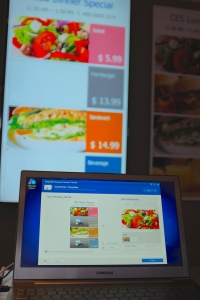


For home or entertainment, there were dozens of cinematic 21:9 4K curved screens at massive sizes. Maybe this transition will be slower (as the replacement cycle for TVs is slow anyway) due to the need for new thoughts on where to put these. This year at least was showing some wall mounting options.

Curved screens are also making their way into small devices. Last year saw the LG Flex and an update was available this year. Samsung introduced a Galaxy Note Edge with a single curved edge. They went to great lengths in the software to use this as an additional notification band. I’m a bit skeptical of this as it was difficult to use without thinking hard about where to put your hand (at last in a booth minute of use).
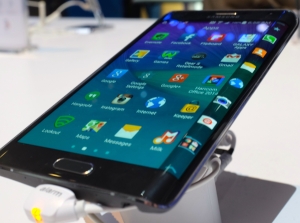
I don’t want to gloss over 4K, but suffice it to say every screen was 4K or higher. I saw a lot of skeptical coverage about not being able to see the difference or “how far away are you”. Let’s all just move on. The pixels are here and pretty soon it will just be as difficult to buy an HD display as it is to buy 512MB SIMMs or 80GB HDDs. That’s just how manufacturing at scale works. These screens will soon be cheaper than the ones they are replacing. Moore’s law applies to pixels too. For the skeptics, this exhibit showed how resolution works.

Screens are everywhere and that’s the key learning this year. There were some awesome augmented reality displays that have been talked about for a long time but are quickly becoming practical and cost-effective. Below is a Panasonic setup that can be used to cosmetics either in store or in salon. It was really amazing to see.

Continuing with augmented or head’s up displays, this was an amazing dashboard in a concept car from Toyota that showed off a full dash of soft-controls and integrated augmented screens.

At a practical level, Sharp and Toshiba were both showing off ready-made dashboard screens that will make it into new cars as OEM components or as aftermarket parts.

Cameras improving with Moore’s law
PM Learning: Cameras continue to gain more resolution but this year also showed a much clearer focus (ha) on improving photos as they are captured or improving video by making it smarter. Cameras are not just for image capture but also becoming sensors in their own right and integrated into sensing applications, though this is just starting. My favorite advance continues to be the march towards more high dynamic range as a default capture mode.
Digital cameras made their debut in the early 1990’s with 1MP still images that were broadly mocked by show attendees and reviews. Few predicted how Moore’s law would rapidly improve image quality while flash memory would become cost effective for these large CCDs and then mobile phones would make these sensors ubiquitous. Just amazing to think about.
High Dynamic Range started off as a DSLR trick and then something you could turn on and is now an Auto feature on most phones. In cameras it is still a bit of a trick. There are complexities in capturing moving images with HDR that can be overcome. Some find the look of HDR images to be “artificial” but in reality they are closer to the human eye range—this feels a bit like the debate during the first music CDs v. vinyl. Since the human eye has anywhere from 2 to 5 times the range of today’s sensors it only makes sense to see this more and more integrated into the core capture scenario. Below is a Panasonic 4K professional video camera with HDR built in.

Facility security is a key driver of camera technology because of the need for wide views, low light, and varying outdoor conditions. A company that specializes in time-lapse imaging (for example construction sites) introduced a time-lapsed HDR camera.

Low light usually kicks in infrared cameras in security settings. For many the loss of color has always been odd. Toshiba was showing off the first 720P infrared camera that generates a color image even in 0 Lux. This is done using software to map to a colorized palette. You can see a traditional infrared and the color version side by side in a cool interactive booth.

In thinking about cameras as ubiquitous, this very clever camera+LED bulb combination really struck me. Not only is it a standard PAR LED bulb, but it adds a Wi-Fi web camera. Lots of potential uses for this.

DSLRs still rule for professional use and their capabilities are still incredible (and should be for what you carry around). Nikon surprised even their folks in the booth by announcing their first Phase Fresnel lens with a 300mm f4. Cannon has a 400mm lens (their “DO” designation). These lenses result in remarkable (better) image quality and immense size and weight reduction. Seen below, is the classic 300mm f4 and the new “PF” version. Add to cart :-)

Finally, Nikon repeated their display of 360-degree stop action Matrix-like photography. It is really am amazing demo with dozens of cameras snapping a single image providing a full walk around. Just love the technology.

Sensors sensing, but early (and it is all about data!)
PM Learning: We are just starting on sensors. While many sensors are remarkably useful today, the products are still first generation and I believe we are in for an exponential level of improvement. For these reasons, I continue to believe that the wearable sensors out there today are interesting for narrow use cases but still at the early part of the adoption curve. Innovation will continue but for the time being it is important to watch (or drive the exponential) changes. Three main factors will contribute to this:
- Today’s sensors are usually taking one measurement (and often that is a proxy for what you want). These are then made into a single purpose product. The future will be more direct measurements as sensors get better and better. There’s much to be invented, for example, for heart rate, blood sugar, blood pressure, and so on.
- Sensors are rapidly improving in silos but will just as rapidly begin to be incorporated into aggregate units to save space, battery life, and more. There are obvious physical challenges to overcome (not every sensor can be in the same place or in contact with the same part of a body or device).
- Data is really the most important element and key differentiator of a sensor. It is not the absolute measurement but the way the measurement is put in context. The best way to think of this is that GPS was very useful but even more useful when combined with maps and even more useful when those maps add local data such as traffic or information on a destination.
Many are still working to bring gesture recognition to different scenarios. There remains some skepticism, perhaps rooted in the gamer world, but for many cases it can work extremely well. These capabilities can be built into cameras or depending on the amount of recognition into graphics chipsets. I saw two new and neat uses of gesture recognition. First, this LG phone was using a gesture to signal the start of a self-timer for taking selfies (just hold out your hand, recognize, squeeze, then timer starts). This was no selfie-stick (which I now carry around all the time due to the a16z selfie-stick investments) but interesting.

This next demonstration was showing gestures used in front of an automobile screen. There were a lot of potential gestures shown in this proof of concept but still there are interesting possibilities.

The incorporation of image recognition into the camera turns a camera into a sensor to be used for a variety of uses. This was a camera that ended up looking like the TV show Person of Interest.

There were quite a few products demonstrating eye tracking. This is not a new technology but it has become very cheap very quickly. What used to take very specialized cameras can now be done with off the shelf parts and some processing. What are missing are use cases beyond software usability labs and medical diagnostics :-)


This take on eye tracking called the Jins Meme integrated eye tracking and other sensors into hipster glasses. Again the scenarios aren’t quite there yet but it is very interesting. They even package this up in multi-packs for schools and research.

There were many products attempting to sense things in the home. I feel most of these will need to find better integration with other scenarios rather than being point solutions but they are all very interesting to study and will still find initial use cases. This is how innovation happens.
One of the more elaborate sensors is called Mother. It packages up a number of sensors that connect wireless to a base station. There are temperature and motion sensors among them. You just place these near where you want to know something (these little chips). Then they have a nice app that translates sensing events into notifications.

There were even sensors for shoes and socks. If you’ve ever had foot issues you know the need to attempt to replicate your pain while being monitored by a high-speed camera or even fluoroscope/x-ray. These sensors, such as this one in a sock, have immediately interesting medical use under physician supervision. Like many of the sensors, I feel this is a best practice use case and don’t think the home-use case is quite right yet because of the lack of accessible scientific data.

The Lillypad floats around in your pool and takes measurements of the water and wirelessly sends them to an app. It also measures UV light as a clever bonus.

Speaking of pools, this was such a clever sensor. It is a Bluetooth radio that you pair with your phone. You get kids to wear this around a pool. When the kid is submerged it will notify you. You can get notified immediately or after a set time (I learned the national standard for under water distress is 25 seconds). The big trick—there’s no technology here; just that Bluetooth doesn’t travel under water. Awesome!
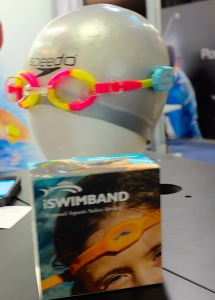
In this previous post, the notion of ingredients versus products at CES was discussed. To emphasize what this means in practice, this montage below is from a vendor that literally packaged up every point-sensor into a “product”. This allows for a suite of products, which is great in a catalog but awfully complex for a consumer. There were a dozen manufacturers displaying a similar range of single-sensor products. I don’t know if this is sustainable.

Connectivity gaining ubiquity
PM Learning: Duh, everything will be connected. But unlike previous years, this is now in full execution mode. The biggest challenge is what “things” get connected to what things or networks. When do you put smarts somewhere? Where does data go? What data is used?
Everything is going to be connected. This has been talked about for a long time, but is really here now. The cost of connectivity is so low and, at least in the developing world, assuming either Wi-Fi or WWAN (via add-on plans) is rational and economical. This will introduce a lot of complexity for hardware makers who traditionally have not thought about software. It will make for room for new players that can re-think scenarios and where to put the value. Some devices will improve quickly. Others will struggle to find a purpose to connect. We’ve seen the benefits of remote thermostats and monitoring cameras. On the other hand, remote controlled clothes washers (that can’t load the clothes from the basket or get the clothes into the dryer) might be still searching. I would add that this dual load washer from LG is very clever.


Many products were demonstrating their “Works with Nest”. This is a nice API and and it is attracting a lot of attention since like any platform is saves the device makers from doing a lot of heavy lifting in terms of software. While many of the demonstrations were interesting there can still be a little bit of a gimmick aspect to it (washing machines). This alarm clock was interesting to me. While many of us just use phones now (which can control nest) this clock uses voice recognition for alarm functions. When connected to a Nest it can also be used to change the temperature or to alter the home/away settings of the thermostat.

A company called Cannon Security relatively new security safe company (most are very old) and I loved this “connected” safe. It isn’t connected the way I thought (an app to open it or alert you of a break in). Instead it is a safe that also has a network cable and two USB ports. So one use might be to store a network connected drive in the safe and use it for backup. You could also keep something in the safe charging via USB. Pretty cool. The jack pack is in the lower right of the image.

My favorite product of the whole show, saving the best for last, is not yet released. But talk about a magic collection of connectivity and data…wow. These founders set out to solve the problem of getting packages delivered to your house. Most communities prevent you from getting a delivery box out front and in many places you can’t have something left on your doorstep and expect it to remain. This product, called “Track PIN” solves the problem. Here’s what it does:
- Insert a small module inline in the tree wires that control your garage door.
- Add a battery operated PIN box to the front of your garage somewhere.
- When you receive a package tracking number email just forward it to trackpin.com (sort of like the way TripIt works).
- THEN, when the delivery person shows up (UPS, FedEx, USPS, and more) they will automatically know in their handheld what code to punch. Upon punching the code your garage door opens a short amount to slide the package in. No signature required. The PIN is invalidated. The driver is happy. You are happy. Amazon is happy. And the cloud did all the work.
I know it sounds somewhat mundane, but these folks really seem to have developed a cool solution. It beats bothering the neighbors.

Fun Products
Every CES has a few fun products that you just want to call attention to without snark or anything, just because we all know product development is not a science and one has to try a lot of things to get to the right product.
Power Pole. This is my contribution to selfies. This one even has its own power source.

Emergency jump starter/laptop charger/power source. This was a perfectly fine product. The fun part was seeing the exact same product with different logos in 5 different booths. Amazing placement by the ODM.

USB Charger. This is the best non-commercial USB charger I’ve seen. It even includes a way out of spec “high voltage port.

Fake TV. This is a home security system that flashes multi-colored LED lights that trick a burglar into thinking you are home watching TV. Best part about it was that when I took the picture the person staffing the booth said “Don’t worry the Wi-Fi Drone version is coming in late 2015”. Gotta love that!!

Surface influence. And finally, I’ve been known to be a fan of Microsoft Surface but I guess I was not alone. The Typo keyboard attempts to bring a Microsoft TypeCover to the iPad and the Remix Ultra-Tablet is a rather uncanny resemblance to Surface 2 running an Android skin (developed by several former Google employees).


Phew. That’s CES 2015 in a nutshell.
—Steven Sinofsky (@stevesi)




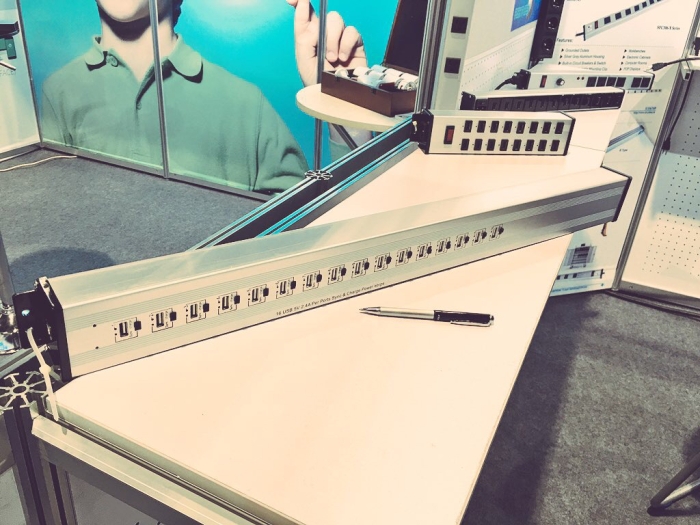

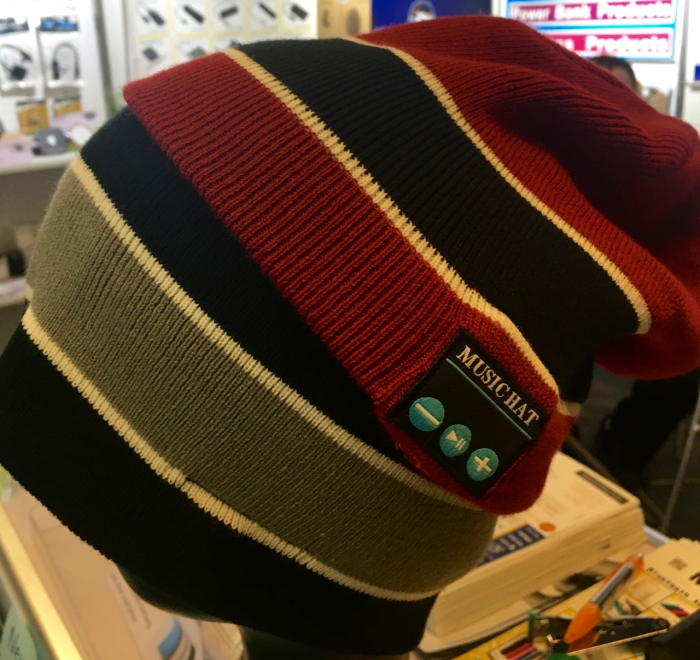
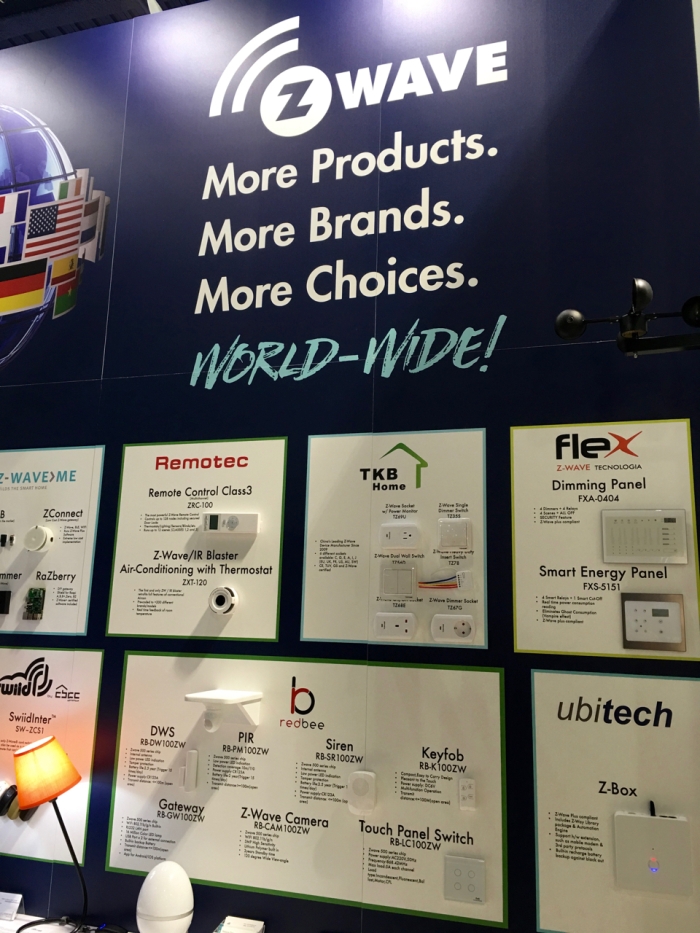


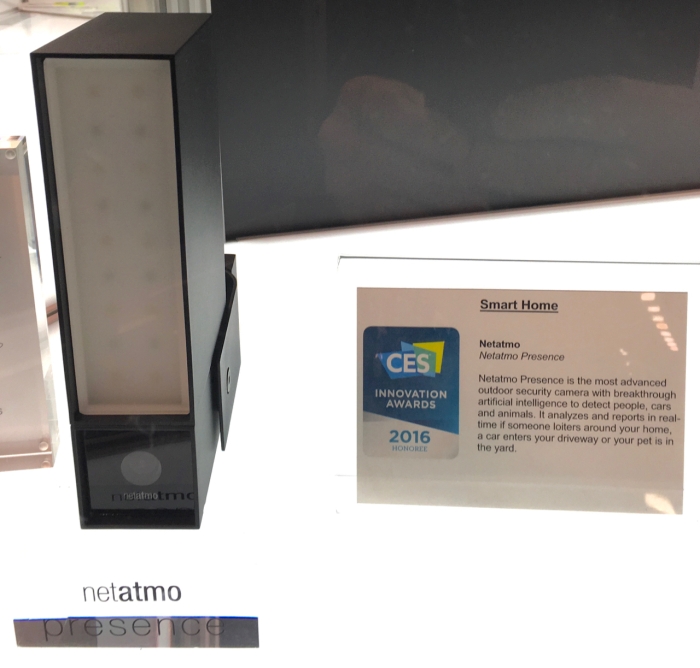
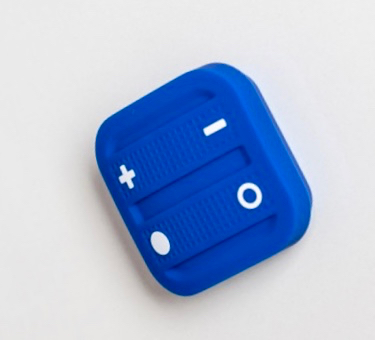


 Flymotion’s complete Police surveillance drone system.
Flymotion’s complete Police surveillance drone system.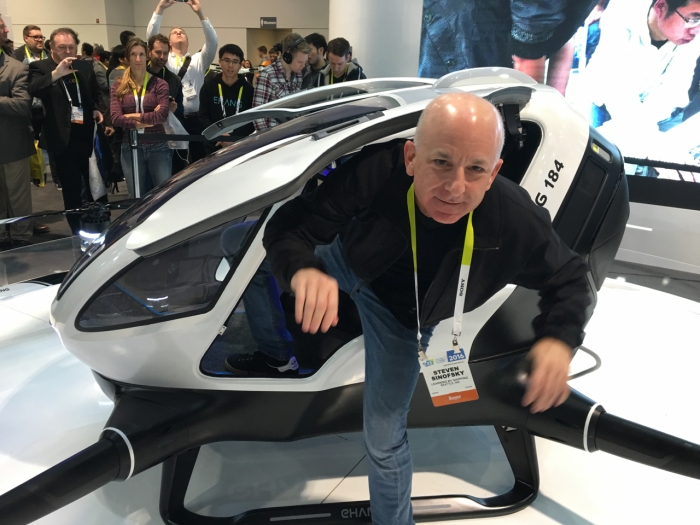


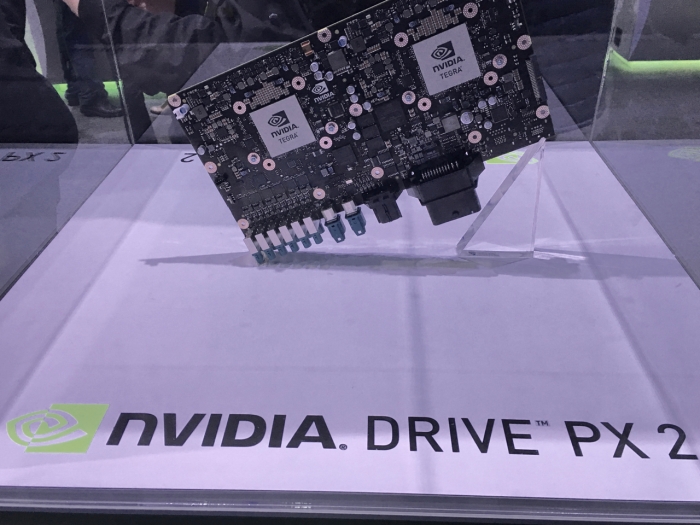
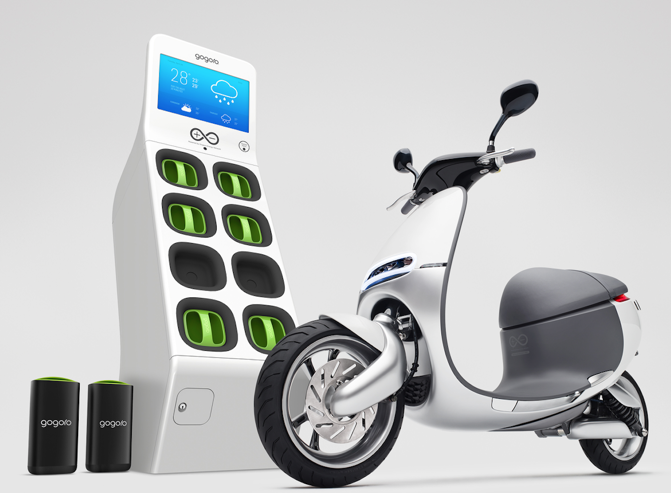



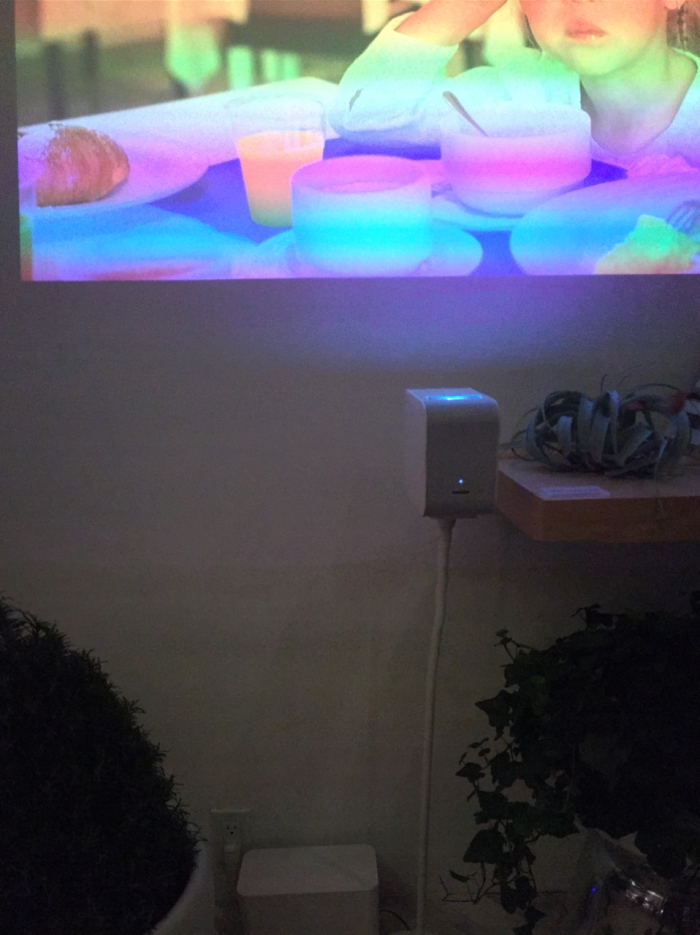
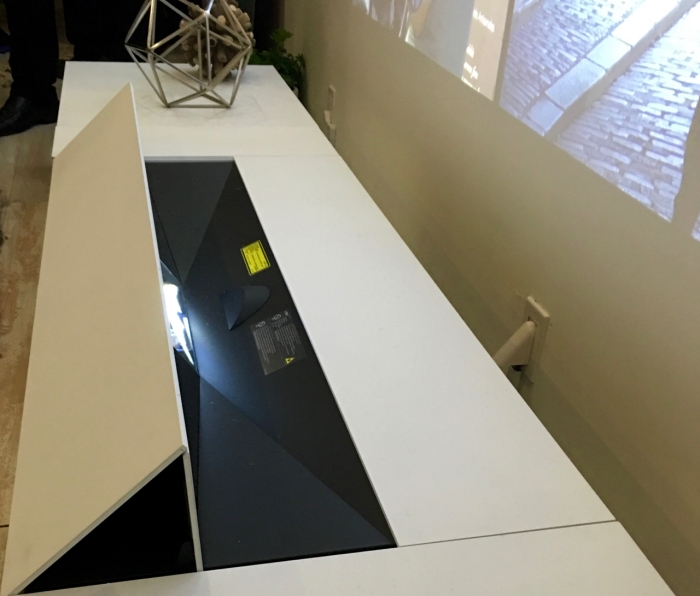 Sony short throw project. Image is about 100″ projecting from the floor console about 12″ from the wall.
Sony short throw project. Image is about 100″ projecting from the floor console about 12″ from the wall.
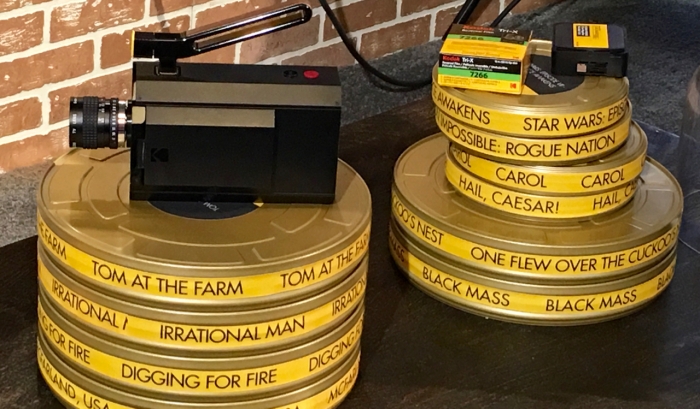
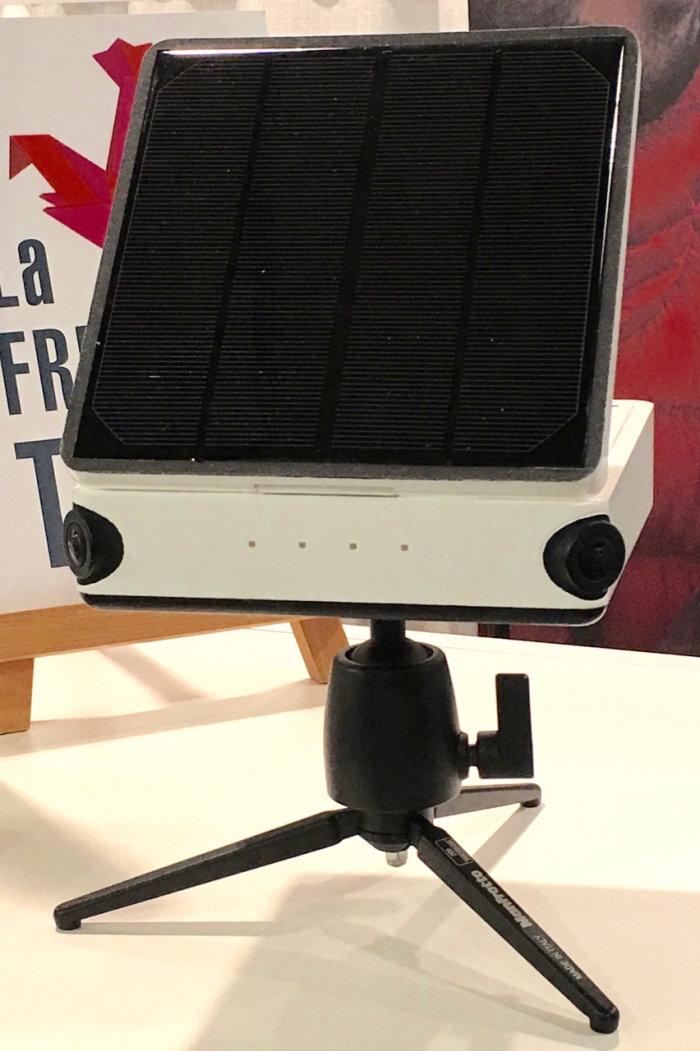
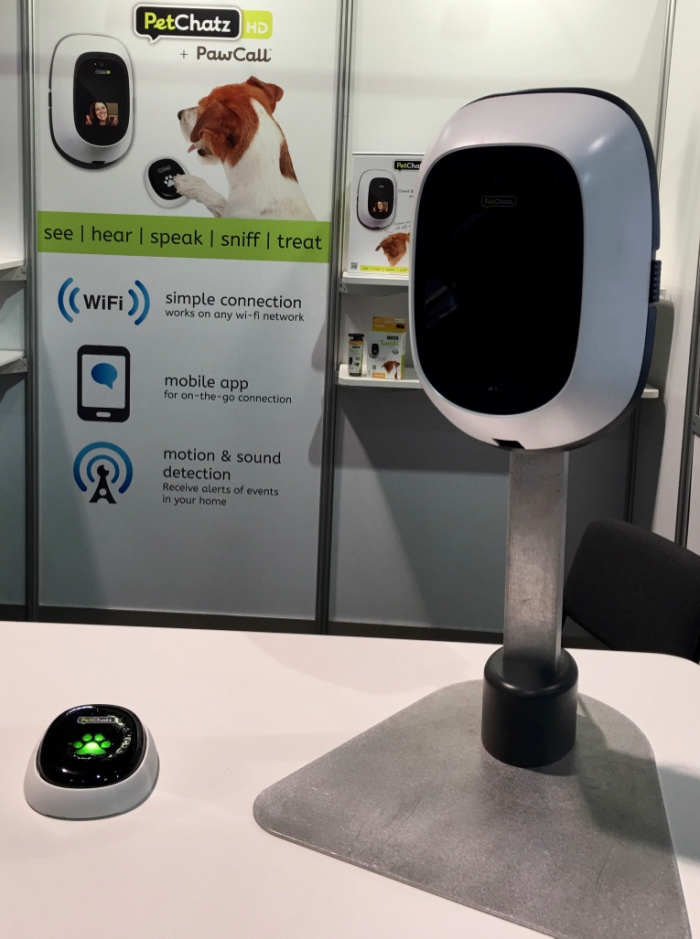
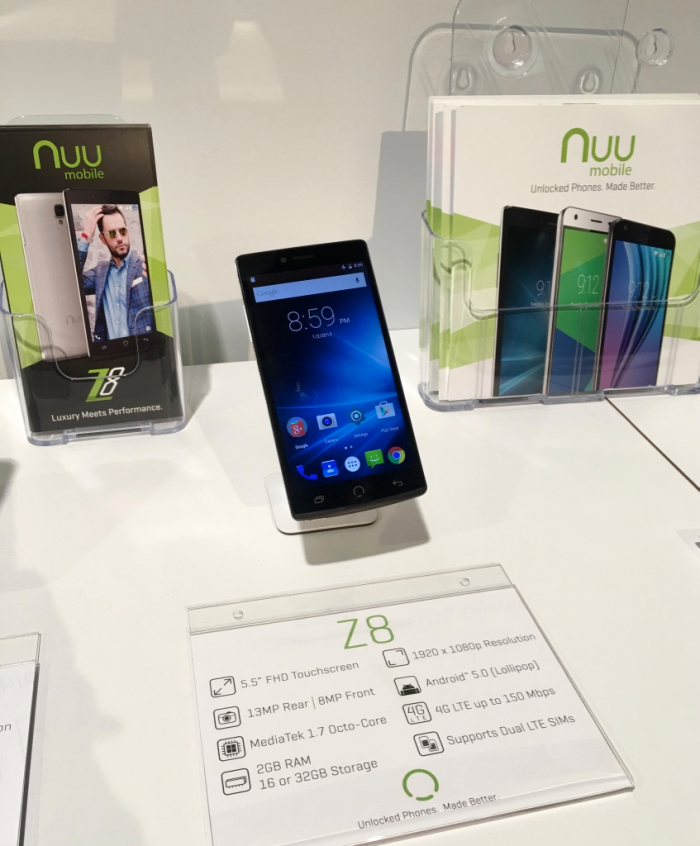

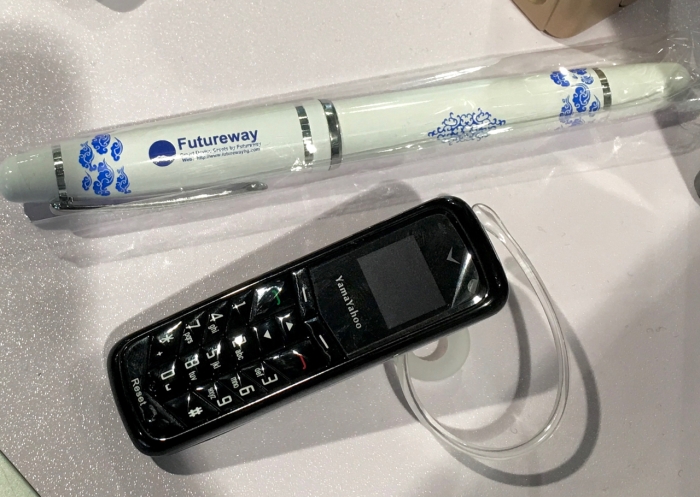


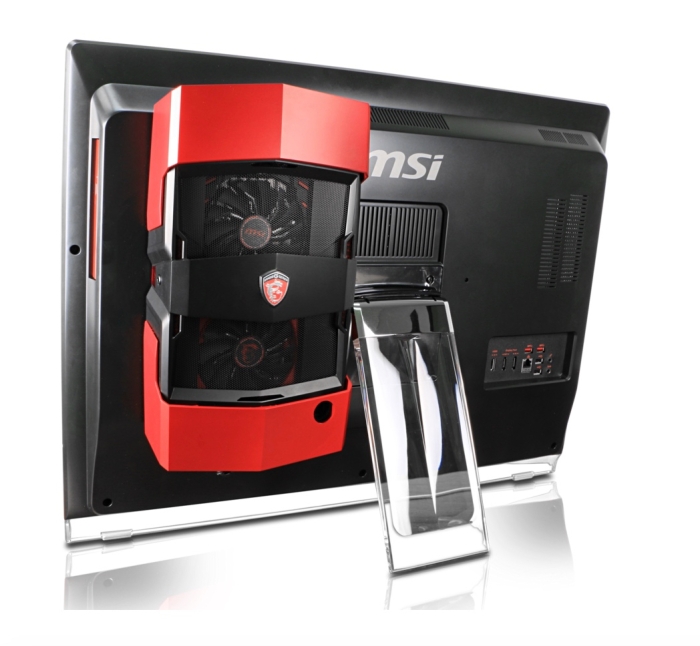


 Taylor Rosenthal, CEO and Founder of Recmed.
Taylor Rosenthal, CEO and Founder of Recmed. CES 2015 was another amazing show. Walking around the show one can only look with wonder about the amazing technologies being invented and turned into products. Few things are as energizing or re-energizing as systematically walking the booths and soaking it all in. I love CES as a reminder of the amazing opportunity to work in this industry.
CES 2015 was another amazing show. Walking around the show one can only look with wonder about the amazing technologies being invented and turned into products. Few things are as energizing or re-energizing as systematically walking the booths and soaking it all in. I love CES as a reminder of the amazing opportunity to work in this industry.















































 CES is an incredibly exciting and energizing show to attend. Sometimes, if you track some of the real-time coverage you might get a sense of disappointment at the lack of breakthrough products or the seemingly endless repetition from many companies making the same thing. There’s a good reason for all this repetition and it is how CES represents our healthy industry working well.
CES is an incredibly exciting and energizing show to attend. Sometimes, if you track some of the real-time coverage you might get a sense of disappointment at the lack of breakthrough products or the seemingly endless repetition from many companies making the same thing. There’s a good reason for all this repetition and it is how CES represents our healthy industry working well.
